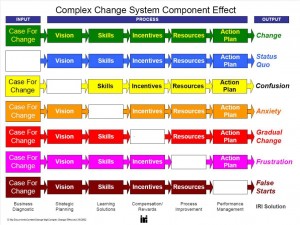Posts Tagged ‘#savmp’
I don’t know about where you are in your planning, but I have to believe you are in a place where you’re starting to plan out next year. It is admissions season for us, and that means handbooks, tuition, dress codes, etc. must all be completed asap. As I look at our school handbook, I see a lot of outdated processes and requirements. There is 1 that I keep hearing about that I’m not sure what to do with and I don’t believe it is something that can be decided in a short amount of time or without quite a bit of debate.
Homework or no homework?
CNN.com posted an article in September 2015 regarding whether or not we should ban homework in schools. Mark Barnes has a book in the first wave of his Hack Learning Series titled Hacking Homework. You can find conversations all over Facebook and Twitter regarding the subject. I won’t share my opinion just yet, but I want to hear from you. Read some articles and chat with your mentors/mentees about your philosophy on homework on your campuses. Of course, much depends on grade level and subject area – or does it? It is an interesting conversation no matter which side you sit on. I can’t wait to read your thoughts.
Be sure to share on Twitter using the #SAVMP hashtag and in the title of your blog. I’m sure these will get some conversation happening! Add the hashtag #HomeworkOrNo to your tweets to keep it going!
Cheers,
Theresa
A few resources:
TED Community Discussion

Charted by Statista – original article on Forbes.com
Hello all! Happy New Year to all of you! Now that the holidays are over we can really get moving (or I can really get moving) 😉
Every year as January begins, I find myself really digging into the year. I love it because it’s like the first days of school again, except that everyone knows the routines already! They aren’t always followed, but they are known!
As a private school, our Open Houses are early in the school year as we have to plan for enrollment and tuition for our budget next year. January is full-swing Open House planning. Our Open House is February 4, and I don’t think I’ve felt so busy.
The great thing about Open House planning is that it makes me really sit back and think about marketing for my school. WHY should people send their children to my school. WHY should they pay money when they can send them to public school for free? WHAT do we have to offer? WHAT is it that makes our school so unique?
I love my building. I feel that we have built something amazing, and I am so proud of it. I have to make sure everyone else sees that, too. I have created lists, solicited suggestions and comments from parents, alumni, current students, teachers, community members. They all have something to share and every time I hear a new comment it makes my chest stick out just a little bit more.
What is it that makes YOUR school amazing? What do YOU have to offer your community? What is happening in your school that the whole world should know? Let’s take January to brainstorm with our mentor/mentee groups on what you have, and how to share it! It is ALWAYS the perfect time to share how amazing your school, teachers, and students are.
I have added a few resources that may help you in your discussions from many in my #PLN who are masters at telling their schools’ stories and branding. Happy chatting!
Cheers,
Theresa
Five Ways to Build Your School’s Instructional Brand and Connect with Families
If we don’t tell our story, someone else will.
http://talkswithteachers.com/power-branding-tony-sinanis-joe-sanfelippo/

(Thanks George, for this month’s post & prompt!)
There has been a lot of talk on the idea that education as a whole takes a long time to change. As an educator, this is a challenging notion, since we are seeing many people doing some amazing things that did not exist when I was a student. Change is happening but sometimes it is hard to see when you are in the middle of the process.
Some things are out of the hands of schools. Budgets and government decisions can make creating new and better learning environments for students tough, but not impossible. Educators are not powerless, and in some cases, more powerful that ever. The story of education can not only be told from the perspective of educators, but also from the students that are currently in the system. Although there is still a lot of work to do (as there always will be in organizations that focus on continuous learning and have an emphasis on becoming “innovative”), there are also opportunities in education, now more than ever, that we will need to take advantage of and create a different path.
Here are some of the challenges we have had in the past and how we can tackle them
1. Isolation is the enemy of innovation.
Education has traditionally been an isolating profession where we get some time together, but not nearly enough. Even if we wanted to change this significantly, in most cases, the current physical structures do not allow us to work with other educators. Some administrators have been very innovative in their planning of teacher prep time and have embedded collaboration time into the regular school day, but it is not necessarily enough to make a significant impact.
How so many educators have shifted this “norm” is by using social media spaces to connect and learn from educators all over the world, and making a significant difference in their own classrooms, and creating much more engaging and empowering learning spaces. Isolation is now a choice educators make. Where the shift really has to happen is using things like Twitter is for educators to connect and share learning that is happening with educators in their own school. I challenged people to do the following (as shared in this visual from Meredith Johnson);

We need to make this happen and create transparency in our own classrooms.
How does a song like “Gangnam Style” go so viral that most people around the world not only know the words but the dance moves? Social media. If a song can spread so quickly, so can great learning.
Make it go viral.
2. A continuous focus on what is wrong, as opposed to what is right.
Think about the traditional practice of what school has done with many of our students. If they struggle with the subject of math, we often send the more math homework to do at home. Does this really make sense? If they are struggling at school, making them struggle at home with the same content is often counter-intuitive. It is not that we shouldn’t struggle, but it is important that we are very thoughtful of how we spend our energy.
The shift that has happened with not only our students, but also our schools, is focusing upon building upon strengths as opposed to focusing solely on weaknesses. This is imperative as building upon strengths often helps us to not only build competence, but also confidence which leads us to the mindset that we are more open to tackle our other challenges along the way.
I love this quote from Forbes on putting people in the right positions to be successful:
Leadership is a privilege, not a right, and we need to treat it as such. Leadership means encouraging people to live up to their fullest potential and find the path they love. That, and only that, will create a strong culture and sustainable levels of innovation.
Many organizations outside of education are hiring not on need, but finding the best people and empowering them based upon their strengths. Schools should try to do their best to follow suit and put people to be in the best situations to not only do well, but to lead.
3. Experience is a very powerful teacher.
I remember sitting and listening to Bruce Dixon at a conference and something he said has always stuck out to me:
In no other profession in the world do you sit and watch someone else do your job for 16 years before you go and do it yourself.
Wow. That is a powerful message and shows why so many new teachers aren’t coming into school with all of these “innovative ideas” and changing our school system like so many people predicted. Many educators simply replicate their experience as a student. If you think about it, at least one-third of many teachers educational experience is as a student, not a teacher. That is a tough thing to overcome, but not impossible.
Innovation has no age barrier, and if we can tweak the experience for educators in their professional learning, they are more likely to change the experience for their students. Writing ideas about “21st century classrooms” on gigantic pieces of paper with a felt marker is not going to create cultural shifts; changing experiences will.
People are starting to look differently at professional learning, and create experiences that are much different from what I first experienced as a teacher. I think a major reason for this shift (going back to point 1) is that educators are seeing the shift in practices in so many other organizations, and are trying to create a different practice where more educators are not really focused on teaching as much as they are about learning. This empathy is crucial since to become a master teacher, you must become a master learner.
Changing experiences to shift the focus on the learner from the teacher helps to disrupt routine. If you would want to create an environment where students would want to be a part of your classroom, we have to experience what learning could look like for ourselves and start from a point of empathy.
One shift that was not mentioned was the mindset of looking at obstacles as opportunities. As mentioned earlier, not everything is in our control, but as educators know, they can make an impact every single day. It is not always easy, and teaching can be a very daunting and tiring job, but I believe that every day we can make a difference if we choose. Having that mindset is the only way that we will ever truly be able to make a powerful change for ourselves and our students.
For this month’s prompt, write about how you already are, or are going to, address the challenges discussed above.
Amber

Teacher empowerment. Student voice. These are real things. Are they happening in your building? As a leader, so you see the need for these two facets of your culture?
It is the responsibility of the leader to provide opportunities and experiences for your teachers to grow as leaders. This is more than just asking once at the beginning of the year, it’s an on going piece of what helps define the culture of a campus. It helps move your school from point A to point B, all fueled by the power of passionately involved staff members.
Have you ever been asked to contribute to a district initiative? When that initiative rolls, out, and you present it your staff, there is a completely different feel to how you “sell” it. You are more invested. You want to see it be successful because you played a part in its creation. The same would hold true for the teachers that you involve in your campus decisions.
Collaborative practices amongst your staff allow for a collective growth, which will also have a direct impact on your students. They have the chance to learn from each other, see different perspectives, and have the chance to share their successes. This builds team morale, as well as allow best practices to be shared and discussed. Highlights from these “share sessions” could become the template for your next staff development!
There was a teacher that I worked with that had a….negative….reputation on our staff. She always asked a million questions, pointed out all of the flaws in any of our plans, and was generally thought of to be a pain. It soon became apparent that I loved having her in meetings!! She brought up every possible way things could go wrong, which allowed me to put a plan in place where it wouldn’t happen. She was detail oriented, where I was more of a big picture girl. Once she realized how truly important I thought her opinion was, she made a concentrated effort to not present her thoughts so antagonistically, which in turn changed the way our staff thought of her.
What are ways that you are INTENTIONAL in allowing your staff to feel empowered? Share your best thoughts here, and we will all benefit from collective empowerment!
Sharingly,
Amber

How Do You Manage Your Time As Principal?
Many things in life change and evolve, but the total time in a day continues to be 24 hours. Part of being the best parent, teacher, administrator we can be is maximizing that time while eating and getting enough rest to live a healthy and rewarding lifestyle. How we use our time as school leaders has a direct impact on what we are able to achieve as students, staff and an organization as a whole. Balance is not easy and some days and weeks it looks different from others. When you’re a principal, one incident that occurs just after the morning announcements can consume a good part of the day when you had so many things on the day’s docket.
As leaders, we know this is going to happen. We know one of the beauties of “the job” is that it is unpredictable, and you never know what is going to happen when you walk into the school each morning. The awesome responsibility we have is to proactively plan for circumstances around professional development, school safety, arrival/dismissal, special education services, staff culture and morale, student/staff/parent relatiobships, custodial, secretarial and the overall day to day management of a busy school building. Now matter what level of school you work at, the day goes by fast and skipping lunches and bathroom breaks becomes the norm when you’re “in the weeds” from time to time.
Don’t choose to go at it alone
At school, much like at home, I’ve found it beneficial to including the support around me in my plans, goals and deadlines. This takes an extra helping of transparency in the day to day work, but in the end when you communicate regularly to your “work family,” you have your secretary, custodian, teacher leaders and others necessary seeing through a similar perspective. At home, my wife and I have a shared Google Calendar on our phones, and home events are booked just like those at work.
This month’s #SAVMP is to take a closer look at your own proactive time management as a school leader and as a person. One resource that I’ve used over the years to help me prioritize the most important parts of my day (where I want to invest my time the most) is The Big Rocks Principal Management. I read this Kim Marshall piece in Principal Magazine back in March of 2008, and it stuck with me. I actually brought a vase and rocks in to live on my desk as as a constant visual reminder of where my mind needs to be focused.
CLICK IMAGE TO VIEW PDF including 10 Big Rocks for Principals

Tools, like a good workout program can put you in a position to be successful, but you have to do the work. There are quite a few tools available that might support efforts to focus your time on what is important. Obviously “there’s an app for that” here in 2015, but again maximizing your time is about mindset and discipline. We can’t expect any tools or app to do the heavy lifting for us. Check out a few “pomodoro apps” (can be downloaded in the
Video on the Pomodoro Technique via Ignite Phoenix by Greg Head
Two recommended tools to get you thinking…

Focus app – Pomodoro
1) I’ve been using the FOCUS pomodoro app since grad school, and use it more at home than at school to get writing, reading and special projects completed.
2) Take control of your Google email with http://sortd.com. On Twitter follow @GetSortd.

Image credit: computerrelatedsolutions.com
How do you manage your time? What have you found as helpful? What has been a roadblock for you? Any tools out there that you’d recommend to a colleague to keep The Big Rocks in focus each day?
Dr. @Joe_Mazza serves as the Leadership Innovation Manager at @PennGSE’s Mid-Career Doctoral Program in Educational Leadership @MCDPEL. You can follow the work of the MCDPEL Innovations Lab here.

A couple of reminders for this initial month…
- Make regular contact with your mentor/mentee’s…vox, tweet, email…whatever you’d like! Develop relationships that will allow for transparency of strengths and weaknesses.
- Write & reflect towards the monthly prompt. Prompts will be posted the first week of the month. You have the entire month to respond.
- Connect on twitter, sharing the posts, using the #SAVMP hashtag.
Not an “official” member? Write & connect anyway! We welcome as many voices in the conversation as we can get!
Guiding-ly,
Amber
When thinking about ways to bring about change or attempting to cultivate something new for your campus, where do you begin? Do you start with a formal staff meeting? Where you stand in front of the group and tell them what you want to see happen?
How effective has the been?
Conversation at dinner last night talk centered around those rockstar teachers on your campus. The ones who are willing to go above and beyond because its what should be done for kids, not because they are getting paid to be there. When I think about some of the crazy ideas that I wanted to see happening in classrooms, I think about the teachers I went to talk with to make that happen. When I wanted to see a bulletin board focused on the digital tools happening in the classroom, I knew exactly where to go to make that happen. This teacher knew my expectations, knew my vision, and what my end goal was with the something as simple as a bulletin board. (Vision! It all come back to vision!) I also had to balance what was asked of this particular rockstar in order to not detract from her teaching, or her relationships amongst the staff. Todd Nesloney wrote an inspiring post about how he embraced that role on his campus.
Who are your teacher leaders? How are you lifting them up and empowering them to be an example without ostracizing them from the rest of your staff? Share your strategies with your mentees this week so they can start keeping an eye out for ways to embrace and lift up those around them.
Have a great week!
Amber

We’ve been discussing the “change matrix” within a leadership group in my district.

What’s in it for me? When it comes to change, this may be one of the most frequently used phrases, both vocalized and internalized. Too many times we miss out on great opportunities because we have the wrong mindset. At what point in a teacher’s career does the focus shift from doing what is best for students to, “let’s do what’s best for me.” Our systems are built around the convenience of the adults and not necessarily for the benefit of the students.
I know that some of you may disagree, but where’s your evidence?
1). Master schedule is based on adult’s preference.
2). Teachers threaten to quit or transfer if they do not get the classroom or conference that they want.
3.) Knowing that some teachers lessons aren’t up to par, but not wanting to rock the status quo.
4.) Looking the other way at worksheet driven classrooms because “the test scores are fine.”
Educators need to be redirected back to the purpose of our profession – doing what’s best for students’ success. Our current practices may give us gradual change, but not the change you need to truly make a difference.
We must provide incentives, which doesn’t always mean money. Knowing how important the students are to both their own success and to ours, what can we do, incentive-wise, to get teachers to focus on what’s best for students? How do you steer the conversations back to what’s best for students? Are you a students’ principal?
(Thanks to Dr. Gerald Hudson for the starting point here, :))
Amber
Instead of asking people to share in a blog post this week, I am hoping we can use this blog to start a comment thread to share some ideas in one space.
As a new principal, it was imperative that I started off right with my school or I could easily lose them right from the beginning. It takes a long time to build trust, but you can lose it an instant. With that being said, I spent time just observing the culture and listening to the ideas of others and trying to build on strengths. In my first year as an assistant principal, I got into a small argument on one of the first days with a strong teacher on our staff. I was actually very upset and looked poorly upon the person, but later when I reflected, I was much too pushy for coming into a new environment and didn’t listen as much as I needed to at that point. Two years later when I was promoted to principal at another school, I chose that very same teacher as my assistant principal.
There were lots of mistakes and learning along the way, but my focus as a principal was on learning the culture of the school as a whole, while also understanding individuals.
So I ask you, to share what are some important thoughts that you have on either starting at a new school, or starting a new year? What has been successful and what didn’t work? Please share your comments below.
Have a great week!
George









